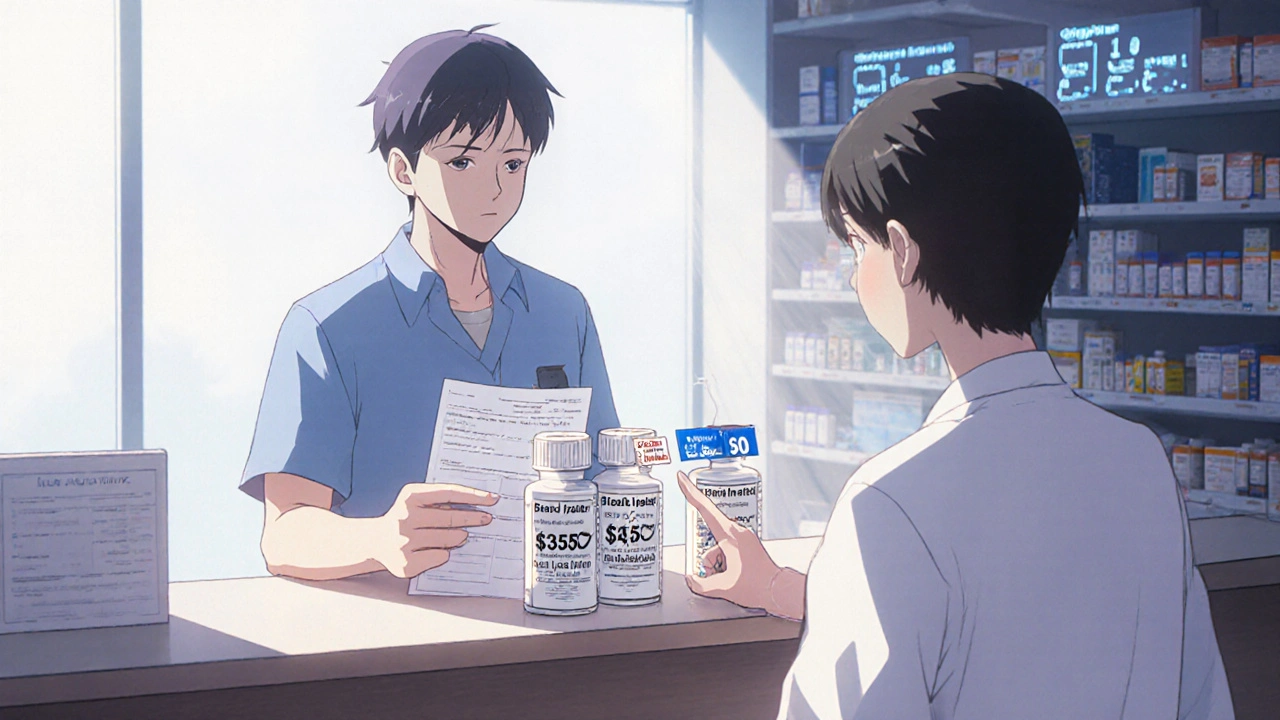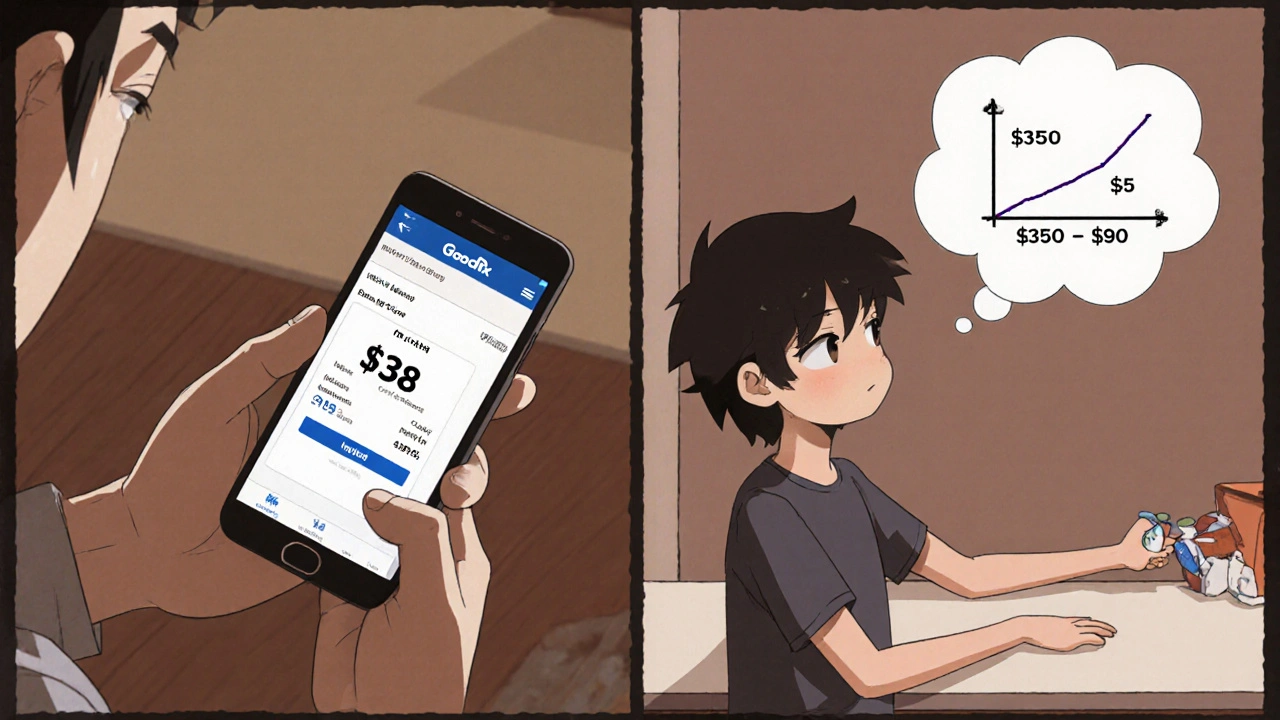How to Ask About Generics and Authorized Generics to Save Money on Medications
 Nov, 15 2025
Nov, 15 2025
Getting your prescription filled shouldn’t feel like a financial gamble. If you’re paying too much for medication, you’re not alone. Most people don’t realize that two types of cheaper alternatives exist-generic drugs and authorized generics-and asking the right questions can cut your costs by half or more.
What’s the difference between generic and authorized generic drugs?
Generic drugs are copies of brand-name medications made after the original patent expires. They contain the same active ingredients, work the same way, and must meet the same safety standards set by the FDA. But here’s the twist: authorized generics are actually made by the same company that makes the brand-name drug. They’re chemically identical, often produced in the same factory, just sold under a different label at a lower price.
For example, if you take the brand-name drug Lipitor, the authorized generic is made by Pfizer-the same company-but sold as atorvastatin. It’s the exact same pill, just cheaper. Traditional generics, on the other hand, are made by other manufacturers like Teva or Mylan after the patent runs out. Both are safe and effective. But when it comes to price, not all generics are created equal.
Why do prices vary so much between generic types?
It’s not about quality-it’s about how insurance and pharmacy benefit managers (PBMs) handle them. Authorized generics often have lower list prices than brand-name drugs. In some cases, they’re priced 50% to 70% lower. But your copay might not reflect that. Some insurance plans treat authorized generics like brand-name drugs, meaning you pay a higher copay even though the drug is cheaper overall.
Take insulin: one patient switched from the brand-name Lantus to its authorized generic and saw the list price drop from $350 to $90. But their copay stayed at $45 because their plan didn’t reclassify the authorized generic as a lower-tier drug. Meanwhile, another person switched from that same authorized generic to a traditional generic and saved $20 a month because their plan put the traditional version in a lower copay tier.
That’s why asking “Is this an authorized generic?” matters. You might be paying more than you need to because your plan doesn’t treat AGs the same way as traditional generics.
How much can you really save?
The numbers speak for themselves. In 2022, generic drugs saved the U.S. healthcare system over $408 billion. On average, a generic version costs 80% to 85% less than the brand-name version. Some drugs saw price drops of over 90% within a year of generic entry. For example, the generic version of Truvada-a HIV prevention drug-plummeted from $50 per tablet to just $3.
But here’s the catch: those savings don’t always reach you. PBMs negotiate rebates with manufacturers, and those discounts often go to insurers or pharmacy chains-not directly to you. So even if the drug costs $5 at the pharmacy, your copay might still be $20 because your plan doesn’t pass along the full discount.
Still, data shows 93% of generic prescriptions cost less than $20 to fill, compared to only 59% of brand-name prescriptions. The average generic copay is $6.16. The average brand-name copay? $56.12. That’s nearly ten times more.

What should you ask your pharmacist?
Most pharmacists know about generics. But many don’t know the difference between traditional generics and authorized generics-or how your insurance treats them. Don’t just ask, “Do you have a generic?” Ask these four questions instead:
- Is there a generic version of this drug available?
- Is this an authorized generic?
- How does my insurance treat authorized generics versus traditional generics?
- Can I save money by switching between generic types?
According to a 2023 study in the Journal of the American Pharmacists Association, patients who asked specifically about authorized generics saved 15% to 25% more than those who only asked about generics in general.
Also, ask if the pharmacy offers a cash price. Sometimes, paying out of pocket with a discount app like GoodRx is cheaper than using your insurance-especially for authorized generics. One patient found their authorized generic insulin cost $45 with insurance but only $38 cash. That’s $7 saved per fill.
Why don’t all pharmacies know the difference?
A 2022 survey by the National Community Pharmacists Association found that only 43% of independent pharmacists could explain how authorized generics affect pricing. That’s not their fault-pharmacies get overwhelmed with complex insurance rules and constantly changing formularies. But that means you have to be the advocate for your own savings.
Don’t be shy. Walk in with a printed list of your medications. Say, “I’m trying to cut costs. Can you help me understand which version of this drug will cost me the least?” Most pharmacists will appreciate the initiative. And if they don’t know, they can call your insurance plan for you.

What about biosimilars and future savings?
For biologic drugs-like those used for arthritis, cancer, or autoimmune diseases-there’s another option: biosimilars. These are not exact copies, but very close versions of complex biologic drugs. They’re cheaper than the original, often by 50%. In 2023, biosimilars saved patients over $7 billion in the U.S.
And change is coming. The FDA’s new Drug Competition Action Plan is pushing to speed up approvals for hard-to-make generics like inhalers and topical creams. In 2022, there were over 300 drug shortages in the U.S.-many due to manufacturing issues. More competition means fewer shortages and lower prices.
There’s also growing political pressure. Proposals like the Prescription Drug Price Relief Act aim to tie U.S. drug prices to what other countries pay. If passed, that could bring down both brand and generic prices even further.
When should you avoid switching?
Not every switch is safe. Some drugs have narrow therapeutic windows-meaning even small changes in how your body absorbs them can cause problems. Examples include warfarin, levothyroxine, and some seizure medications. The FDA still requires these generics to meet strict bioequivalence standards, but if you’ve been stable on a brand-name drug for years, talk to your doctor before switching.
Also, don’t assume all generics are the same. Some people report slight differences in side effects or effectiveness when switching between different generic manufacturers. If you notice a change-like more headaches, dizziness, or changes in how you feel-tell your doctor. You might need to stick with one manufacturer’s version.
Bottom line: Ask, compare, save
Medication costs are rising, but you have more power than you think. Generic drugs aren’t just cheaper-they’re just as safe and effective. Authorized generics can be even cheaper, but only if your insurance treats them right. The key is asking the right questions and knowing your options.
Next time you pick up a prescription, say: “Is there a generic? Is it authorized? And how does my plan treat it?” That simple conversation could save you hundreds a year. And if your pharmacist doesn’t know, ask them to call your insurance. You’re not being difficult-you’re being smart.
Thousands of people are already doing this. You don’t have to pay full price for a drug that costs a fraction elsewhere. Just ask.
Are generic drugs as safe as brand-name drugs?
Yes. The FDA requires generic drugs to have the same active ingredients, strength, dosage form, and route of administration as the brand-name version. They must also prove they work the same way in the body-called bioequivalence. This means they’re absorbed at the same rate and to the same extent. Millions of people take generics every day without issue.
Why is my copay the same for a generic and a brand-name drug?
Your insurance plan’s formulary may place both the brand and the generic in the same tier. This often happens with authorized generics, which some insurers treat like brand-name drugs even though they’re cheaper. Check your plan’s drug list or call your insurer to see which tier each version is on. Sometimes switching to a traditional generic lowers your copay.
Can I use GoodRx with my insurance?
You can’t combine GoodRx with insurance, but you can use it instead. GoodRx shows cash prices at local pharmacies. Sometimes, the cash price-even for a brand-name drug-is lower than your insurance copay. Always compare both options before paying. For authorized generics, GoodRx often shows the lowest price.
Do authorized generics have the same side effects as the brand?
Yes. Authorized generics are made by the same company, in the same facility, using the same ingredients and processes. The only difference is the label. If you’ve had side effects from the brand, you’ll likely have the same ones from the authorized generic. But since they’re identical, you won’t get new side effects from switching.
Why do some generics cost more than others?
It depends on competition. When only one generic maker produces a drug, prices stay higher. When multiple companies enter the market, prices drop. Authorized generics often enter first and can suppress competition, which is why some traditional generics are cheaper later. Also, some manufacturers charge more for convenience or packaging. Always compare prices across pharmacies.
